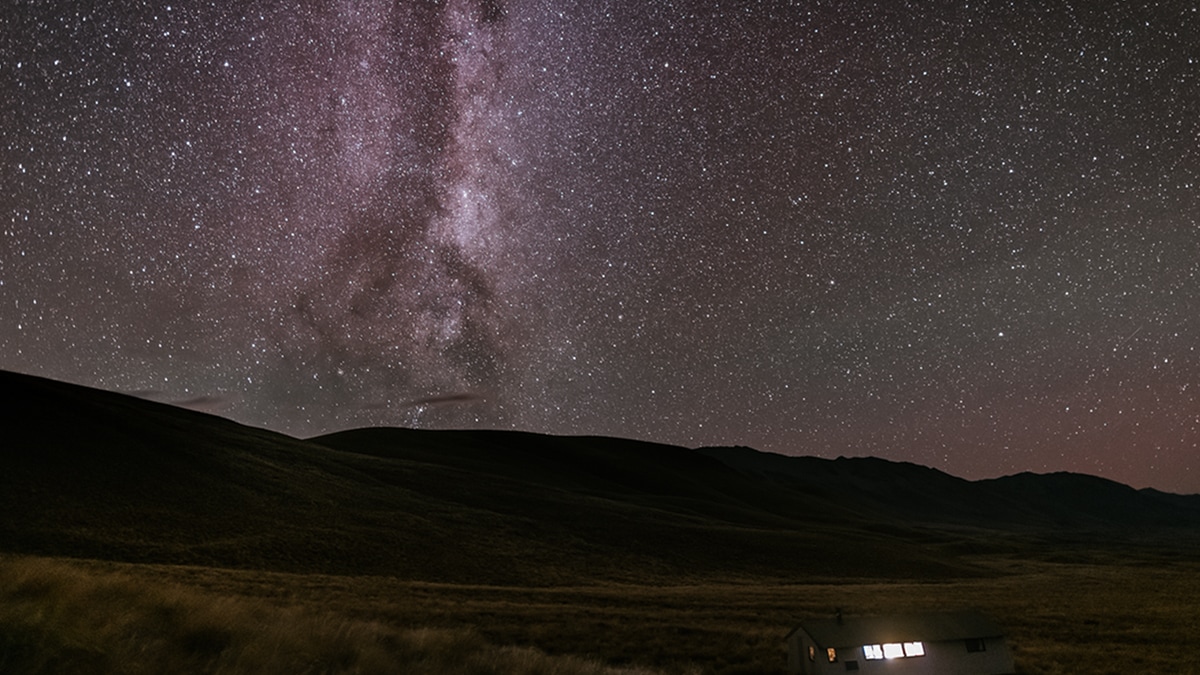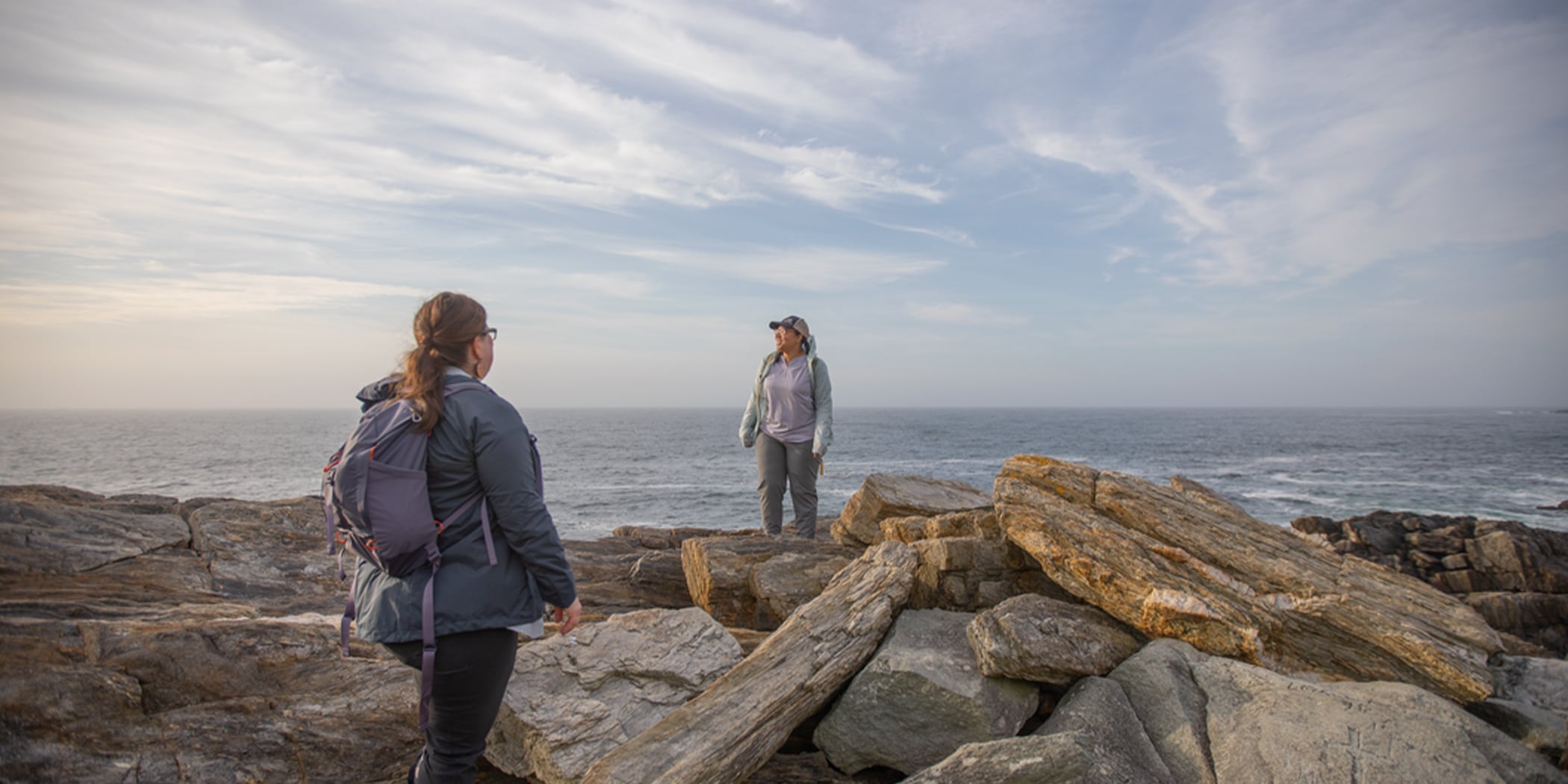Awe comes in many forms. It’s the amazement that arises with once-in-a-lifetime experiences, such as catching the northern lights, or the wonder of taking in a transcendent performance, or the quiet “wow” you utter while watching a magnificent sunset. As human beings, we have a natural capacity for awe, but in the midst of our busy routines, it’s surprisingly easy to lose it.
“If you think to yourself, where did mine go? Or why do I feel bored all the time? It’s just a gentle self-compassionate acknowledgment that your sense of wonder is in couch-potato mode,” says Gregg Levoy, author of Vital Signs: Discovering and Sustaining Your Passion for Life. The good news is that it can be regained.
“Wonder is a skill,” says Levoy. “It can be cultivated, and cultivation happens most readily in the moment—the gesture, the little risk, the spontaneous action.” Anything that brings novelty, variety or a sense of discovery can spark awe—but the great outdoors is arguably our most reliable source.
In June, University of California, Berkeley researchers published the results of two studies in the journal Emotion that found that people felt a greater sense of well-being and less stress after experiences of awe in nature. (REI Co-op and the REI Foundation supported this work by making grants to the Sierra Club Foundation, which collaborated on the research.) For example, one study took military veterans and at-risk youth on rafting trips and asked them to record their emotions in a diary. The researchers found that awe experienced in the outdoors—above any other positive emotion—was related to positive changes in well-being. A week later, subjects’ post-traumatic stress disorder symptoms were down 30 percent and stress symptoms were down 20 percent, the study found.
“Everybody has this anecdotal evidence that awe in nature is good for people, but seeing those numbers blew me away,” says Craig Anderson, a co-author of the study. “Nature is one of the most common and powerful ways people experience awe in their daily lives.”
Interested in boosting your own sense of awe outside? Here are seven ways to spark this powerful and healing emotion.
1. Take an awe outing
Sometimes you don’t need a change in scenery as much as a change in perspective. According to the Greater Good Science Center, in Berkeley, California, an “awe outing” is one great and easy way to inspire that change. The practice lets “you turn an ordinary outing into a series of awe-inspiring moments filled with delightful surprises.”
To take an awe outing, first, turn off your phone. Then set off on your outing; it could be a trail, a lakeshore, a local park, a school playground or any place that you choose. Then take a deep breath, inhaling over a count of six and exhaling over a count of six. Start to walk and pay attention to what is around you, both in the distance and nearby, and specifically to things that delight and surprise you. From time to time, bring your attention back to your breath, then zoom out again to focus on both the vast and small, from the patterns of sunlight coming through the trees to a vista in the distance. For full instructions on how to take an awe walk, visit the Greater Good Science Center’s website.
2. Try a new activity—maybe even one you’ve never heard of
When time is limited, it’s easy to fall into a rut. But it can be surprisingly easy and inexpensive to try something new. Free and low-cost group activities exist in every city across the country. Meetup.com is one good way to find new ones, from learning how to paddle a dragon boat in Boston to a wild-edibles foraging class in Austin, Texas. REI also offers classes across the country in outdoor activities and skills, including rock climbing, mountain bike maintenance, and map-and-compass navigation.

3. Meditate outdoors
Meditating in nature can cultivate joy, wonder and a sense of connection, says Mark Coleman, a mindfulness teacher, wilderness guide and author of Awake in the Wild: Mindfulness in Nature as a Path of Self-Discovery. Find a comfortable seated or lying position in a safe place outdoors, close your eyes and draw your attention to your sensory experience. Notice sounds, tastes, smells and sensations coming and going, all with a quality of open, nonjudgmental awareness. For full instructions on meditating in nature, visit Coleman’s website.
4. Experience a natural phenomenon
If you like to travel, consider planning your next trip around a natural phenomenon. In May and June in the Great Smoky Mountains of the southeastern United States, for example, certain kinds of fireflies light up the woods in synchronized flashes, attracting visitors from across the world. Between February and April, on the Platte River in central Nebraska, sandhill cranes arrive by the hundreds of thousands in one of the greatest wildlife-migration spectacles in the world. And all year round, the geysers of Yellowstone shoot up out of the earth in magnificent displays of the earth’s power.

5. Go on a microadventure
You don’t need to hop a flight, break the bank or use precious vacation days to inject novelty into your daily life, says Alastair Humphreys, the author of Microadventures: Local Discoveries, Great Escapes. You just need curiosity, a positive attitude and an idea for a microadventure—a short, cheap excursion that’s close to home but is new and different. For example, if you have one free day, go to the nearest train station with your bike and buy a ticket for a station about 30 miles away, Humphreys recommends. Take your time riding home. Stop to see the sights, take unexpected turns and talk to new people—let spontaneity and intuition be your guides.
6. Change your perspective
“The senses are very much involved in cultivating wonder and there are all kinds of instruments that amplify our senses,” says Gregg Levoy. “When I’m out in the natural world I carry a magnifying glass with me everywhere that I go. It’s a game changer.” With a magnifier in hand, check out things you otherwise wouldn’t give a second thought—a ladybug, a piece of moss, a mushroom—and discover a new view on everyday objects.

7. Look up
Few aspects of the natural world inspire more awe than a star-speckled night sky. A coalition of star lovers and astronomy buffs is working to preserve the darkness of our night skies by designating dark sky parks and reserves around the world. These areas have particularly dark conditions, thanks to their locations as well as night-sky-friendly initiatives, such as lighting ordinances and public education. Visit certified dark sky parks like Capitol Reef National Park in Utah or Newport State Park in Wisconsin. Watch the cosmos unfold in all of its perspective-smashing glory. Even better, visit during an astronomical event, such as the Perseid meteor shower in August.
